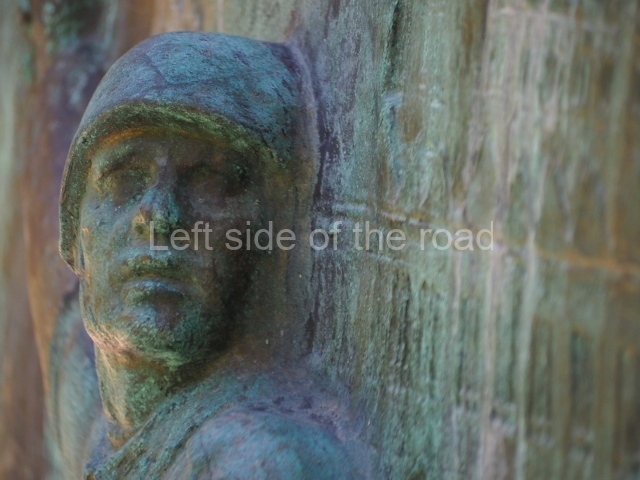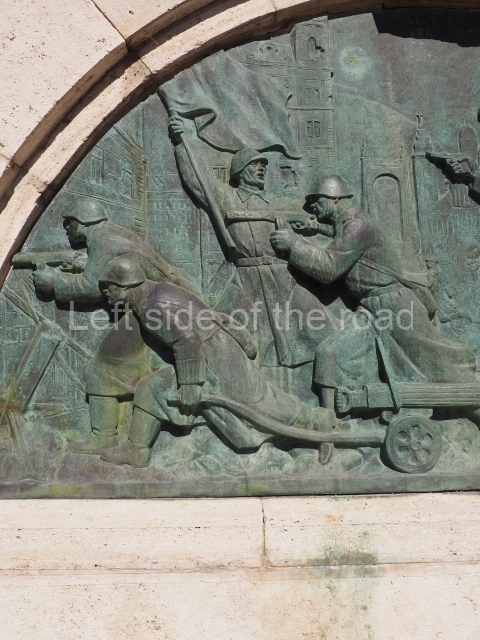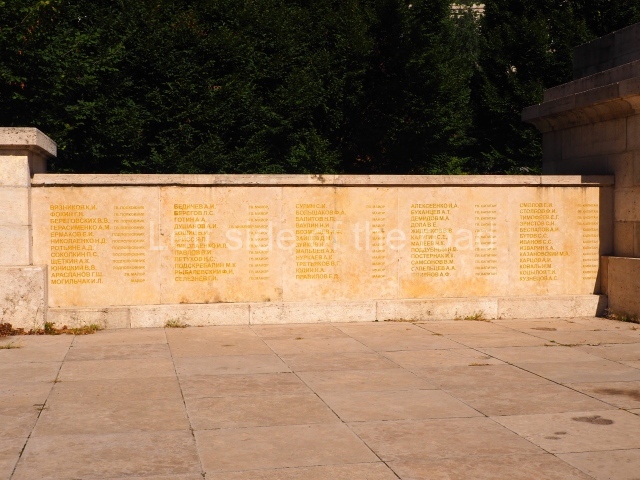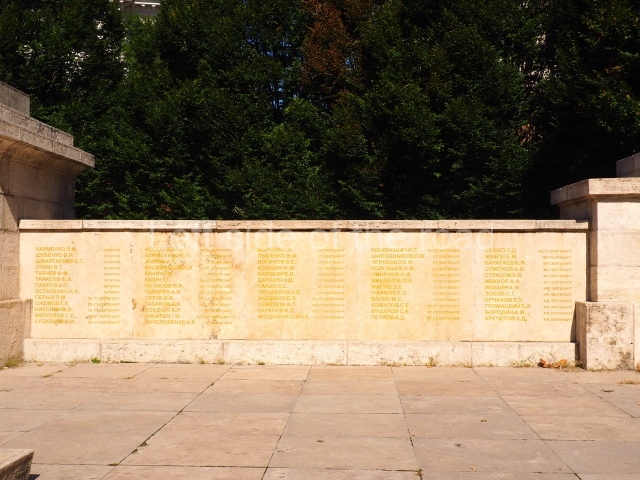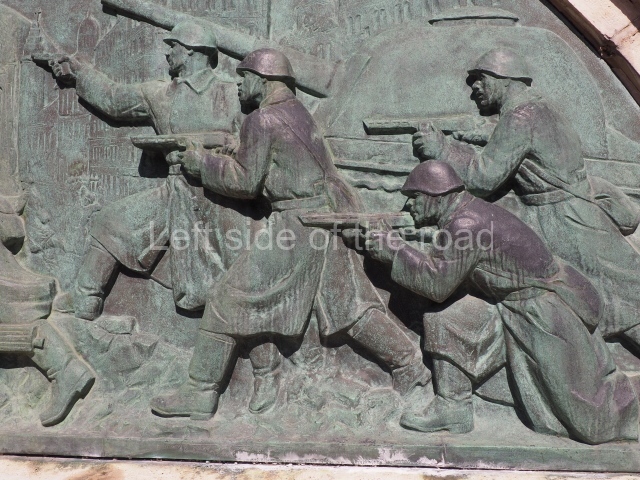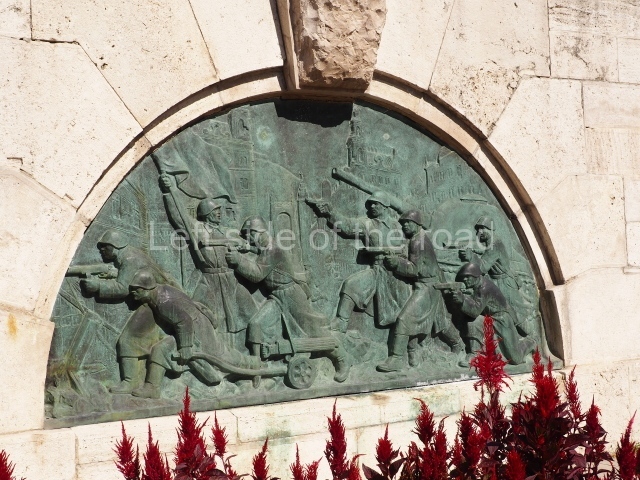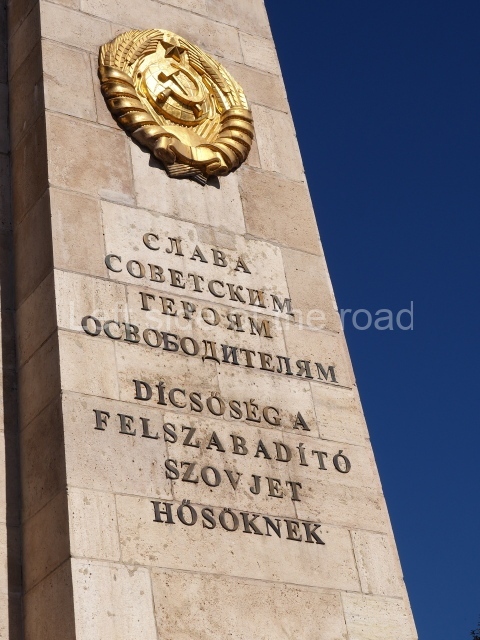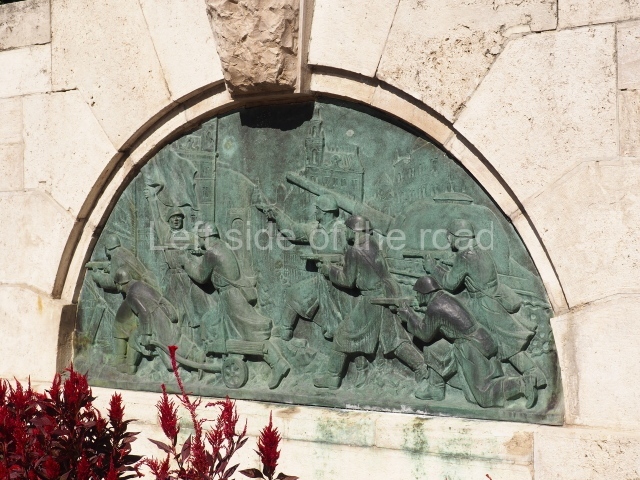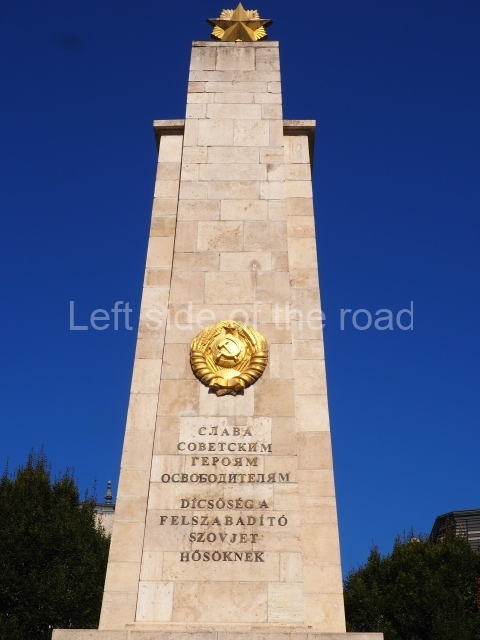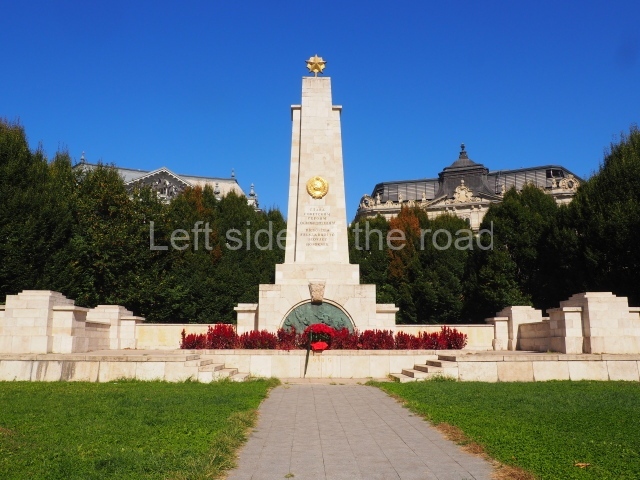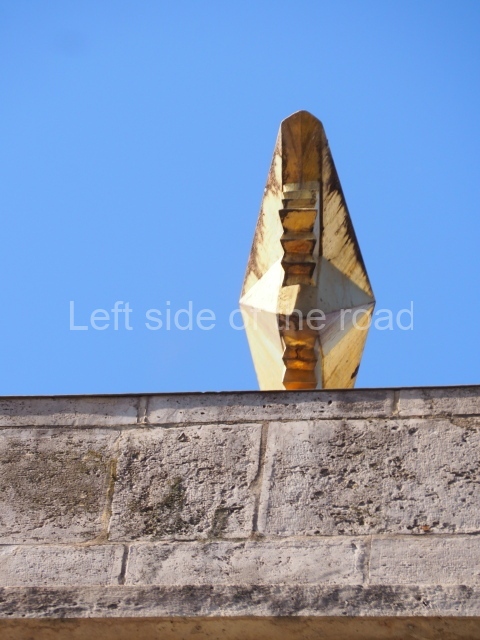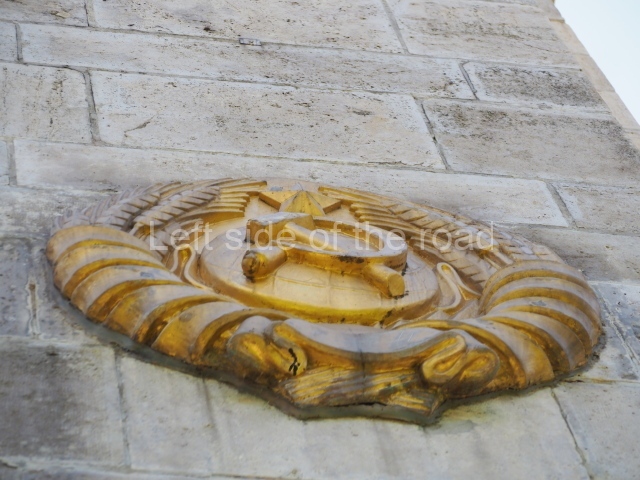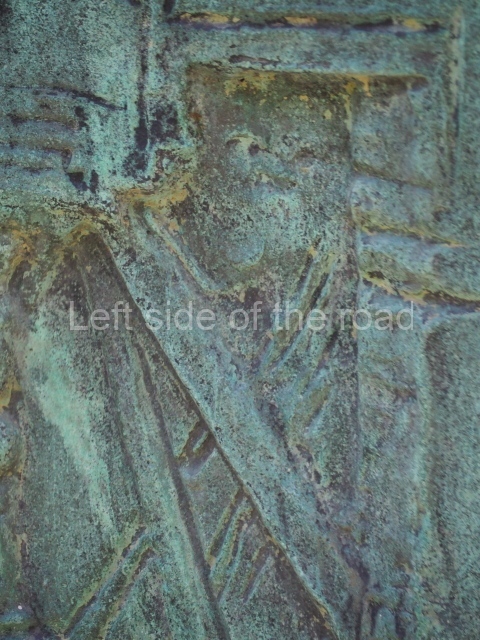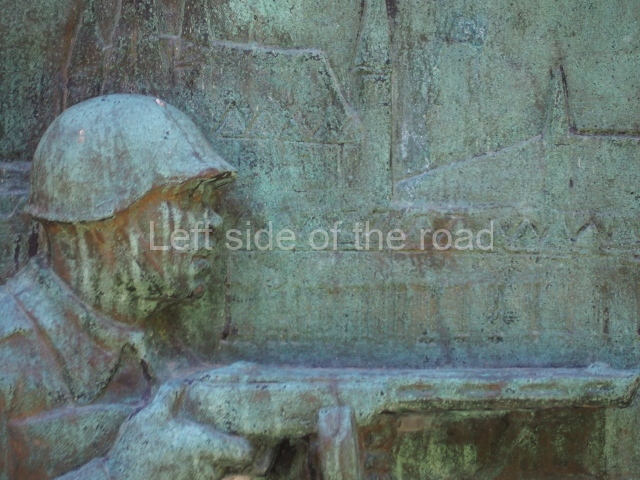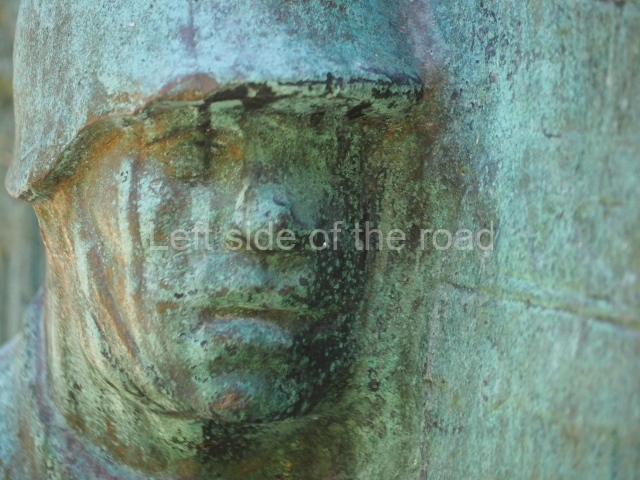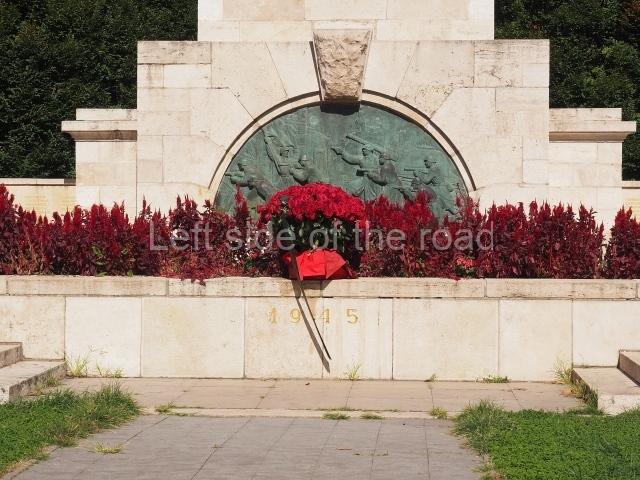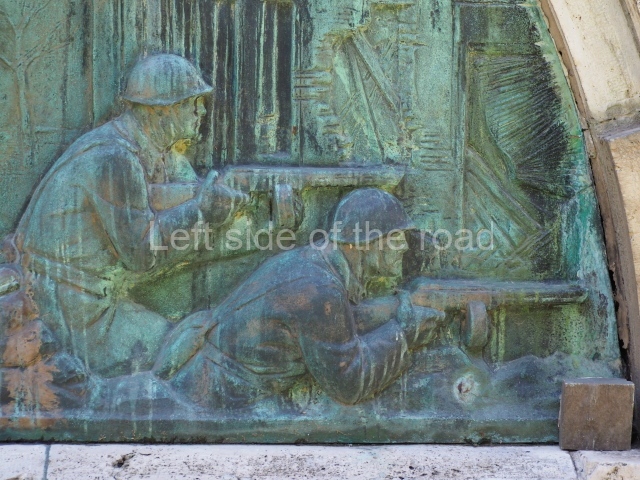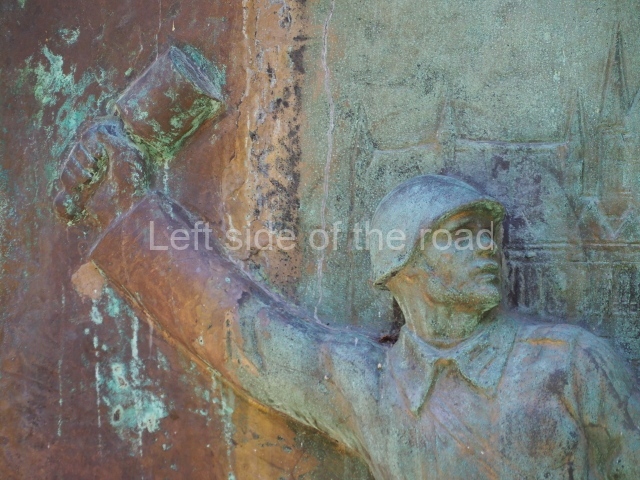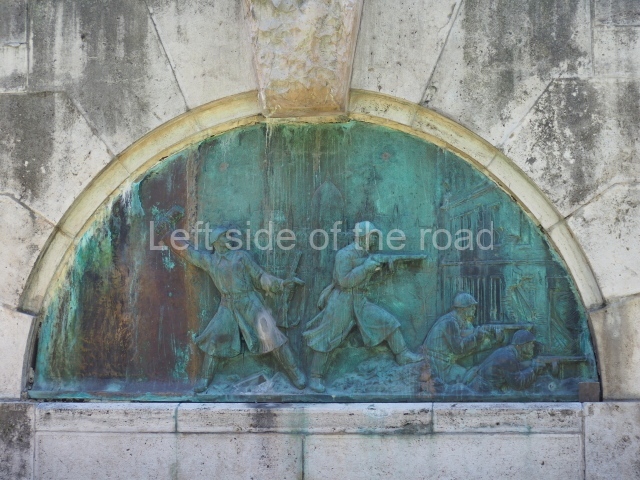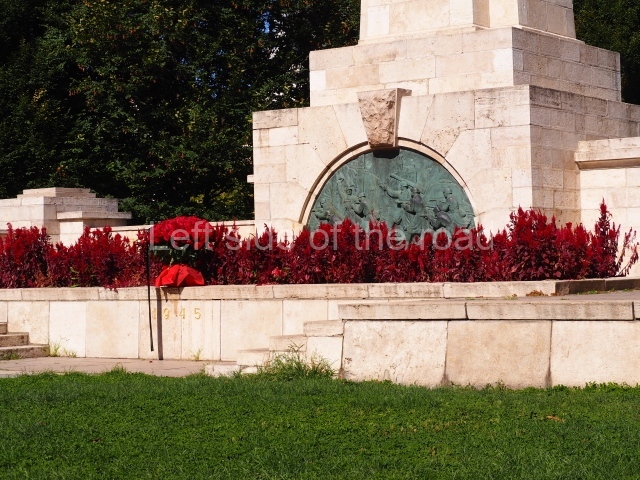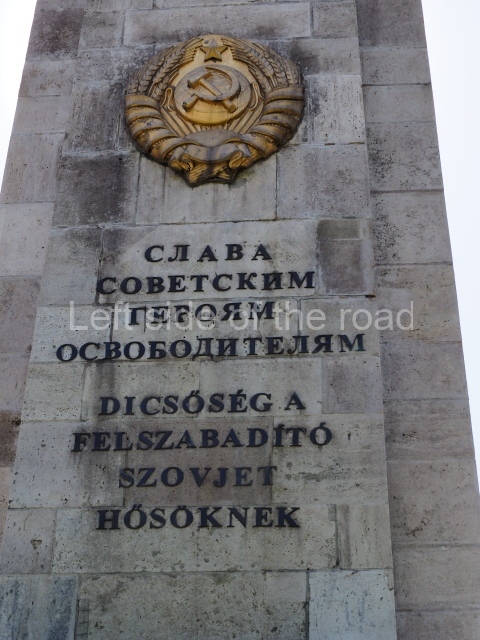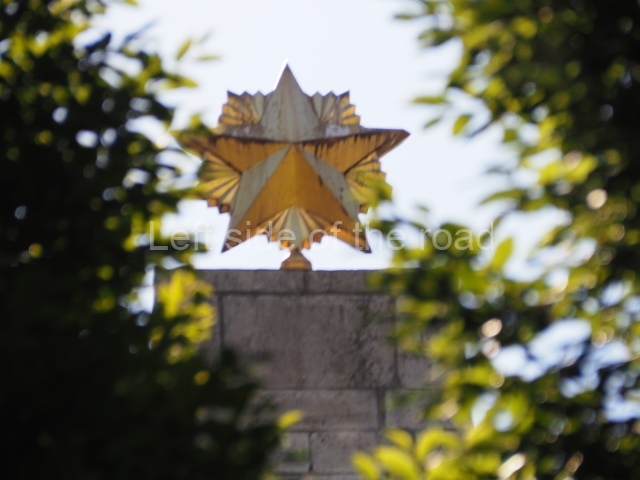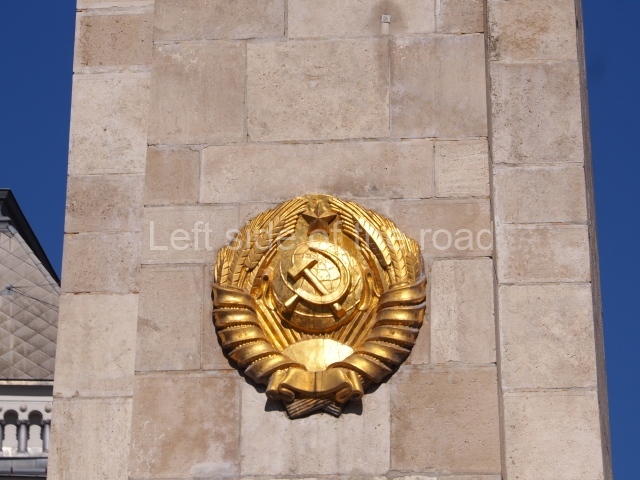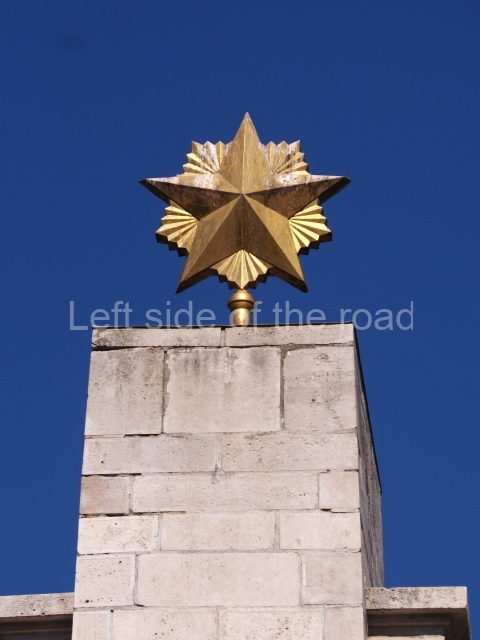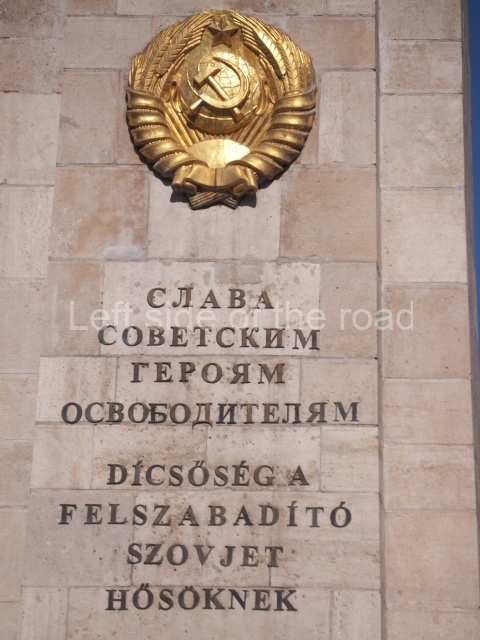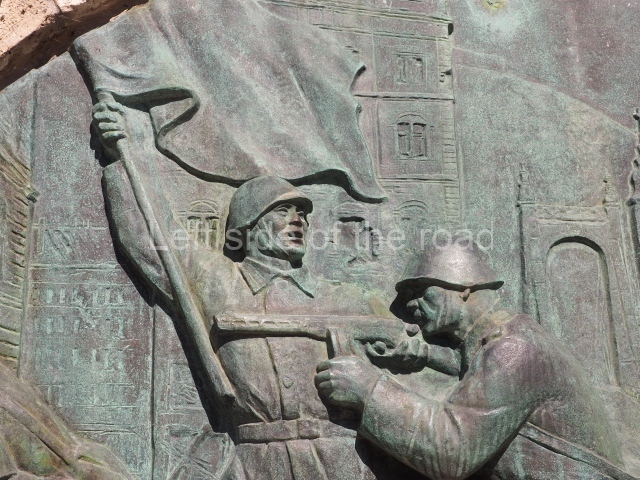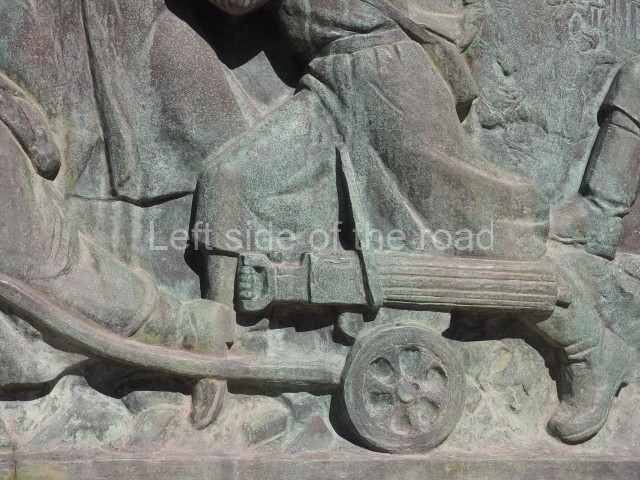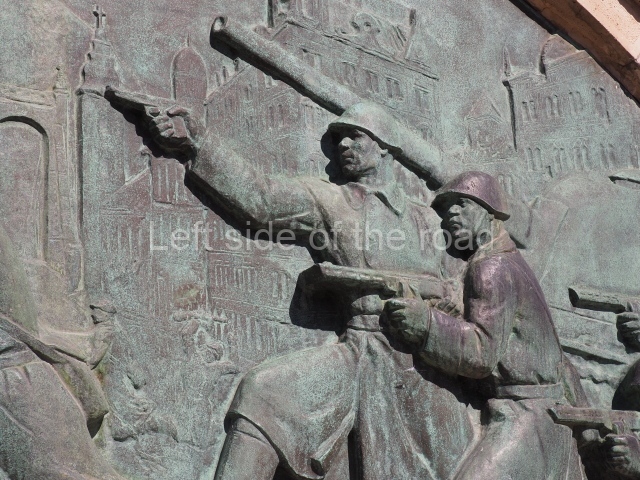Monument to the Soviet Red Army, Liberty Square, Budapest
The monument to the liberating Red Army consists of a column, stepped at its lower levels, surmounted by a large, golden, three-dimensional star. On the face of the column, around half way up, is a golden representation of the State emblem of the Soviet Union.
Below the emblem, in black lettering are the words, in Cyrillic,
СЛАВА СОВЕТСКИМ ГЕРОЯМ ОСВОЂОДИТЕЛЯМ
and then in Hungarian;
DÍCSÖSÉG A FELSZABADÍTÓ SZOVJET HÖSÖKNEK
These translate as;
GLORY TO THE SOVIET HEROES, LIBERATORS
The column sits on a platform which is reached by a short series of five steps on both sides. To the left, rear and right of the column there’s a low wall. On this wall, immediately to the left and right of the column, the names of some of the Soviet fallen officers are engraved in gold lettering. This seems strange to me. Ninety-five thousand Red Armymen must have died in the battle for Budapest but why just single out the officers to be named on the memorial?
There are two, semi-circular bas reliefs – one that most people see on the ‘front’ of the monument and the other at the back.
The one at the front depicts a common theme on such monuments, a group of eight Red Armymen advance, weapons at the ready, attacking a position held by the Nazi occupiers. The first group of four, on the left, includes a soldier – who is not shown to be armed – who holds aloft the Soviet Flag (although there’s no indication of the hammer and sickle or a star) whilst looking back, urging those behind to join in the attack. This is a common aspect of such Socialist Realist sculpture and can be seen in, for example, on some structures in Albania and Russia. Another soldier in this group is dragging along a Pulyemyot Maksima PM1910, a heavy Maxim machine gun (versions of which seem to have been used for more than a hundred years).
The second group of four are on the right and they are accompanied by a tank, the gun barrel of which looms ominously above them. Three of them are soldiers with a submachine gun (almost certainly a PPSh-41) and the fourth, at the top, is an officer with a pistol. They are all aiming and firing at the Nazis.
In the background can be seen the outline of some of the most distinctive buildings in the centre of Budapest, many of them ruins, demonstration of the fierceness of the fighting. (Something like 80% of the buildings of Budapest were either destroyed or severely damaged by the end of the final battle.)
In many ways the back of the column is a mirror of the front. There’s the emblem of the Soviet Union and the same inscription in both Russian and Hungarian. There’s also a semi circular bas relief but although it is also an image of attacking Soviet Red Armymen it tells a sightly different story.
Here we have a group of four soldiers on the attack with an even more ruined image of Budapest in the background. They are moving from left the right and the soldier on the extreme left is standing and is about to throw a stick hand grenade with his right hand. At the same time he holds a submachine gun (probably again a PPSh-41) in his left hand. The other three of the group are advancing and firing against the Nazi enemy in the seriously damaged remains of Budapest before the final liberation on 13th February 1945.
A combination of lack of maintenance and climate probably is the cause of the damage to the images at the back. Although providing a green and natural backdrop the large trees behind the monument create a humid environment and in the winter that area probably doesn’t get any sun at all. And there is obvious damage caused by humidity on the bas relief panel. To the left of the panel water damage has changed the colour of the bronze from green to a dirty brown. Above the panel there are signs of mould around the lettering and the Soviet emblem doesn’t shine so bright as it does at the front.
On the other hand the façade that people normally see gets the full force of the sun so there’s an element of self-maintenance here as the damp and mould don’t have an opportunity to establish themselves and grow. Also any damage here would be noticed immediately. On my visit a dozen or more big tour groups stood in front of the monument and were treated to an anti-Soviet, anti-Russian diatribe, with no reference to the fact that the Hungarians were firm supporters of the Nazis and it was a combined force of German and Hungarian fascists that were surrounded in late December 1944 before the final liberation 50 days later.
In the centre of the base of the platform, in gold lettering, is the date ‘1945’, the year of liberation. There’s a small, reasonably well tended flower bed in front of the bas relief panel, with red flowers. On my visit there was also a large bunch of red roses, left at some time in the recent past to commemorate some specific event, unknown to me.
Considering the presence of various fascist groups in Hungary and the constant harping on about the 1956 counter-revolution I’m slightly surprised the monument is in such a good condition. There is a government to government agreement that the monument will not be removed but that wouldn’t normally stop Hungarian Nazi sympathisers.
Location;
Szabadság tér (Liberty Square)
South-east of the Parliament Building.
GPS;
47.50417º N
19.05057º E




